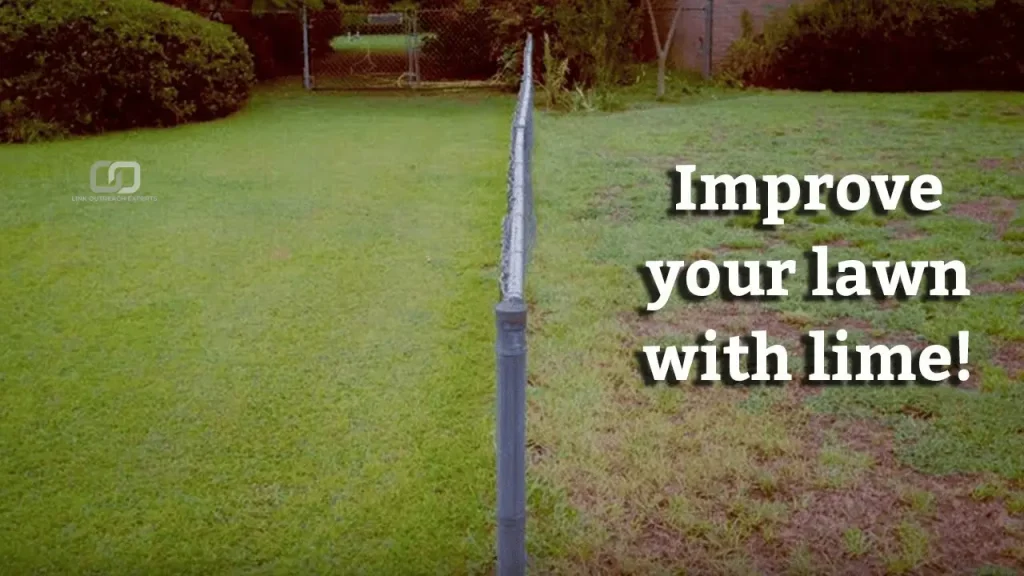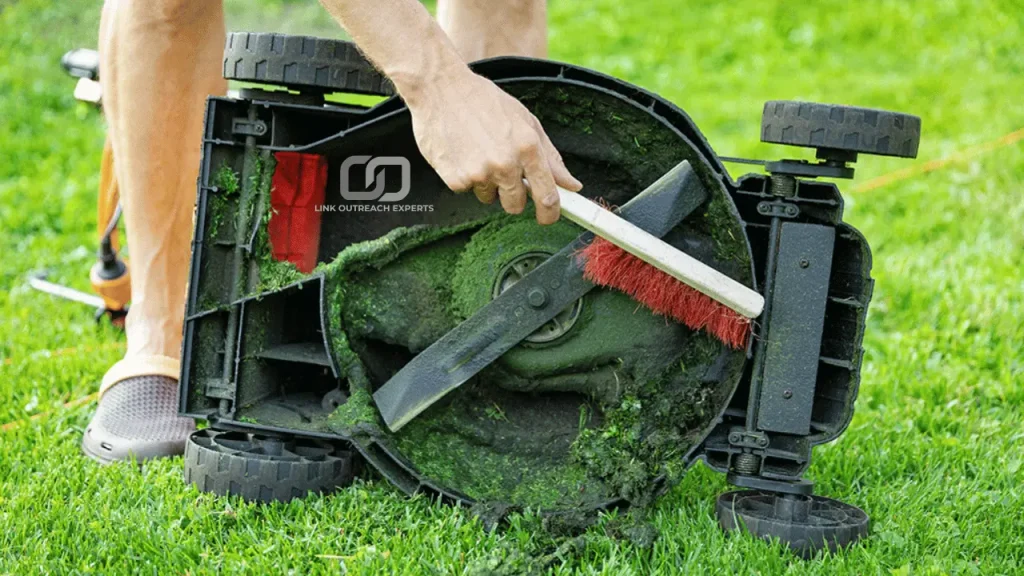A healthy lawn needs the right balance of nutrients. Soil pH plays a big role in this. pH measures how acidic or alkaline the soil is. Grass grows best when the pH is between 6.0 and 7.0. If the soil is too acidic, nutrients get locked away, and grass struggles to grow. Weeds, moss, and patchy grass may appear. Testing the soil helps determine if the pH is too low.
Lime is used to raise soil pH. It helps neutralize acidity and improves nutrient absorption. When the pH is balanced, grass grows stronger and greener. Fertilizers also work better in the right pH range. Applying lime at the right time can prevent lawn problems. Regular testing ensures the soil stays healthy.
Table of Contents
Why Lime is Important for Lawns
Lime is important for keeping lawn soil healthy. Over time, soil can become too acidic due to rain, fertilizer use, and organic matter breakdown. When the pH drops too low, essential nutrients like nitrogen and phosphorus become harder for grass to absorb. This weakens the grass, making it look thin, yellow, or patchy. Weeds and moss may also take over because they thrive in acidic conditions.
Adding lime helps balance the soil’s pH. It reduces acidity, making nutrients more available for the grass. This leads to stronger root growth, greener blades, and better overall lawn health. Lime also improves soil structure, helping it drain better and preventing compaction. This allows air, water, and nutrients to reach the roots more effectively.
A well-balanced pH also helps fertilizers work better. When the soil is too acidic, fertilizers do not perform as expected. By applying lime regularly and testing the soil, you can prevent future problems and keep your lawn looking fresh. Proper pH balance makes lawn care easier and more effective. After applying lime to your lawn, ensure healthy growth by learning how to treat lawn fungus naturally for long-term care.
Signs Your Lawn Needs Lime
- Yellow or Patchy Grass: If your lawn looks yellow or has bare spots, acidic soil could be the cause. Low pH prevents grass from absorbing nutrients, leading to weak growth. Even with watering and fertilizing, the lawn may not improve. Lime helps restore balance and promotes greener, thicker grass.
- Presence of Weeds and Moss: Weeds like dandelions and clover thrive in acidic soil. Moss also spreads in damp, low-pH conditions. If these unwanted plants take over despite regular care, your lawn may need lime to rebalance the soil.
- Slow Grass Growth: Acidic soil locks away nutrients, making it hard for grass to grow properly. Even with fertilizer, the lawn may remain thin and uneven. A soil test below 6.0 suggests lime is needed to boost nutrient absorption.
- Soil Feels Hard or Compacted: Acidic soil often becomes compacted, preventing roots from spreading. If your lawn feels hard or drains poorly, adding lime can help loosen the soil and improve air and water flow.
- Frequent Lawn Diseases: Unbalanced pH weakens grass, making it more prone to disease. Fungal infections and thinning patches are common in acidic soil. Lime strengthens the lawn and improves its resistance to diseases.
How to Test Your Soil’s pH
Using a Soil Test Kit
A soil test kit is an easy way to check pH levels at home. These kits include test strips or capsules that change color based on soil acidity. To test, collect soil from different parts of your lawn, mix it, and follow the kit’s instructions. The color chart will help determine if the pH is too low, indicating the need for lime.
Professional Soil Testing
For more accurate results, consider professional testing. Many garden centers and agricultural services offer detailed soil analysis. They check not only pH but also nutrient levels. This helps determine exactly how much lime your lawn needs.
Signs from Plant Growth
Certain plants can indicate acidic soil. If your lawn has excessive weeds, moss, or weak grass, pH may be too low. While not as precise as testing, plant health can be a natural sign that lime is needed.
Best Time to Apply Lime
Fall is the Ideal Season
Fall is the best time to apply lime because the soil has time to absorb it over the winter. Rain and snow help break down the lime, allowing it to adjust the pH gradually. This prepares the lawn for healthy growth in spring. The cooler weather also reduces stress on the grass, making it easier for the lawn to recover.
Spring Application is Also Effective
Spring is another good time to apply lime, especially if your soil test shows high acidity. However, spring applications should be done early before the grass enters its peak growing season. Lime takes time to work, so applying it in early spring helps balance the pH before summer. Avoid adding lime too late, as it may interfere with fertilizers.
Avoid Summer and Winter Applications
Applying lime in summer is not recommended because heat and dry conditions slow down its effectiveness. Grass is also under more stress, making it harder to absorb nutrients. In winter, frozen ground prevents proper absorption, and heavy snow can wash lime away before it can benefit the soil. For the best results, stick to fall or early spring applications.
How to Apply Lime to Your Lawn
Choose the Right Type of Lime
Lime comes in two main types: powdered and pelletized. Powdered lime works faster but is harder to spread evenly. Pelletized lime is easier to apply and less messy, though it takes longer to break down. Choose the type that best suits your needs and lawn conditions.
Test and Prepare the Soil
Before applying lime, conduct a soil test to determine how much is needed. Mow your lawn and remove debris like leaves and twigs. If the soil is compacted, aerate it first to help the lime absorb better. Applying lime to a well-prepared lawn improves its effectiveness.
Spread the Lime Evenly
Use a broadcast or drop spreader for even application. Walk in straight lines to ensure full coverage. Avoid piling too much lime in one spot, as this can harm grass. If applying a large amount, consider splitting it into two applications to prevent overloading the soil.
Water the Lawn After Application
After spreading lime, lightly water the lawn to help it absorb into the soil. This speeds up the reaction and prevents dust from blowing away. Over time, the lime will adjust the pH, improving lawn health and nutrient absorption.
Mistakes to Avoid When Applying Lime
- Applying Without a Soil Test: One of the biggest mistakes is adding lime without testing the soil. Too much lime can make the soil too alkaline, harming grass and plants. A soil test helps determine the right amount needed to balance the pH.
- Using the Wrong Type of Lime: Lime comes in different forms, including powdered and pelletized. Powdered lime works faster but is harder to spread evenly. Pelletized lime is easier to apply but takes longer to break down. Choosing the wrong type may slow down results or cause uneven coverage.
- Over-Applying Lime: Applying too much lime at once can raise the pH too high, making it difficult for plants to absorb nutrients. If a large amount is needed, apply it in stages over several months. Gradual application prevents soil imbalance.
- Applying at the Wrong Time: Lime works best when applied in fall or early spring. Applying in summer can stress the grass, while winter applications may not absorb properly due to frozen soil. Timing is key for the best results.
Conclusion
A healthy lawn needs balanced soil to grow strong and green. If your grass looks weak, turns yellow, or has too many weeds, the soil may be too acidic. Testing the soil’s pH helps determine if lime is needed. Applying lime at the right time can improve nutrient absorption and overall lawn health.
Lime should be applied carefully to avoid overuse. Fall or early spring is the best time for application. Proper spreading and watering help lime work effectively. With the right care, your lawn will stay healthy, grow evenly, and remain free from common soil-related issues.


